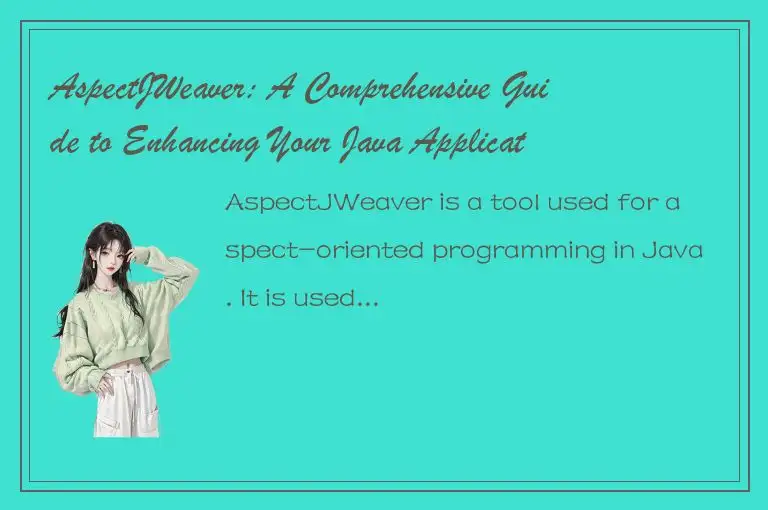AspectJWeaver is a tool used for aspect-oriented programming in Java. It is used to add cross-cutting concerns to your Java code, making it easier to manage your codebase and reducing code duplication.

What is AspectJWeaver?
AspectJWeaver is a part of the AspectJ project, which is an open-source extension to the Java programming language. It adds several features to Java, including aspect-oriented programming (AOP). AOP is a programming paradigm that allows you to address cross-cutting concerns by separating them from the main application logic. This separation enables you to change these cross-cutting concerns without affecting the entire application.
AspectJWeaver is a Java agent that instruments Java bytecode during runtime. The bytecode is transformed to add the aspect-oriented programming features. The goal is to enhance Java applications with the power of AOP.
How does AspectJWeaver work?
AspectJWeaver works with Java classes and methods at runtime. It modifies the bytecode in such a way that the cross-cutting concerns are weaved (or merged) with the code. The weaved code can then be executed in the same way as the original code.
The following are the steps involved in using AspectJWeaver:
1. Declare aspects: You define aspects that contain code snippets that address the cross-cutting concerns you want to address. These aspects are defined using AspectJ's syntax.
2. Compile aspects: Using the AspectJ compiler (ajc), you compile the aspects into .class files.
3. Instrument: You use AspectJWeaver to instrument the code at runtime by adding the compiled aspects to the bytecode. This step enables you to access and modify the bytecode on the fly.
4. Execute: You run the modified bytecode, which now includes the added aspects.
Why use AspectJWeaver?
There are several reasons why you might want to use AspectJWeaver in your Java projects:
1. Cleaner code: AspectJWeaver enables you to separate cross-cutting concerns from the main application logic. This separation results in cleaner, more modular code that is easier to maintain and extend.
2. Reduced code duplication: With cross-cutting concerns separated from the main code, you can reuse the code snippets across the application. This reuse reduces the overall amount of code in the application and eliminates code duplication.
3. Efficient maintenance: Separating cross-cutting concerns makes it easier to maintain the codebase. You can modify the code snippets that address these concerns without affecting the rest of the application. This agility makes it possible to keep the codebase up-to-date with changing requirements.
4. Accessibility: AspectJWeaver enables you to access and modify Java bytecode at runtime. This access makes it possible to add new functionalities to the application without recompiling the code.
Examples of AspectJWeaver
Here are some examples of how AspectJWeaver can enhance Java applications:
1. Logging: You can declare an aspect that logs method execution times for a specific class. This logging is separate from the main application logic, making it easier to maintain and update.
2. Security: You can declare an aspect that checks permissions before granting access to sensitive methods or data. This security aspect can be attached to specific classes, making it easier to modify the security rules without affecting other parts of the application.
3. Debugging: You can declare an aspect that pauses the execution of a method for a certain amount of time. This aspect can be used for debugging purposes or for testing how an application handles long-running methods.
Getting Started with AspectJWeaver
To get started with AspectJWeaver, you need to install the AspectJ compiler and AspectJWeaver. You can download them from the AspectJ website.
Once you have installed AspectJ and AspectJWeaver, you can start writing aspects using AspectJ's syntax. After writing the aspects, you compile them using ajc. You can then instrument the code at runtime using AspectJWeaver.
Conclusion
AspectJWeaver is a powerful tool that enables you to enhance your Java applications with the power of aspect-oriented programming. With AspectJWeaver, you can separate cross-cutting concerns from the main application logic, resulting in cleaner code that is easier to maintain and extend.
By following the steps outlined in this guide, you can start using AspectJWeaver in your Java projects. With practice, you can learn to write aspects that address specific cross-cutting concerns and add new functionalities to your applications.




 QQ客服专员
QQ客服专员 电话客服专员
电话客服专员